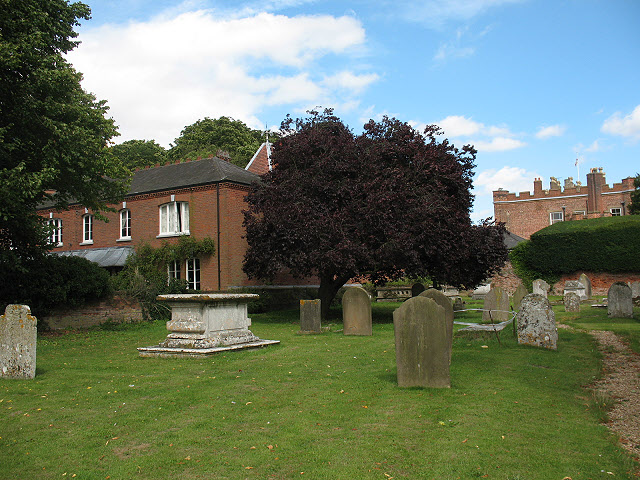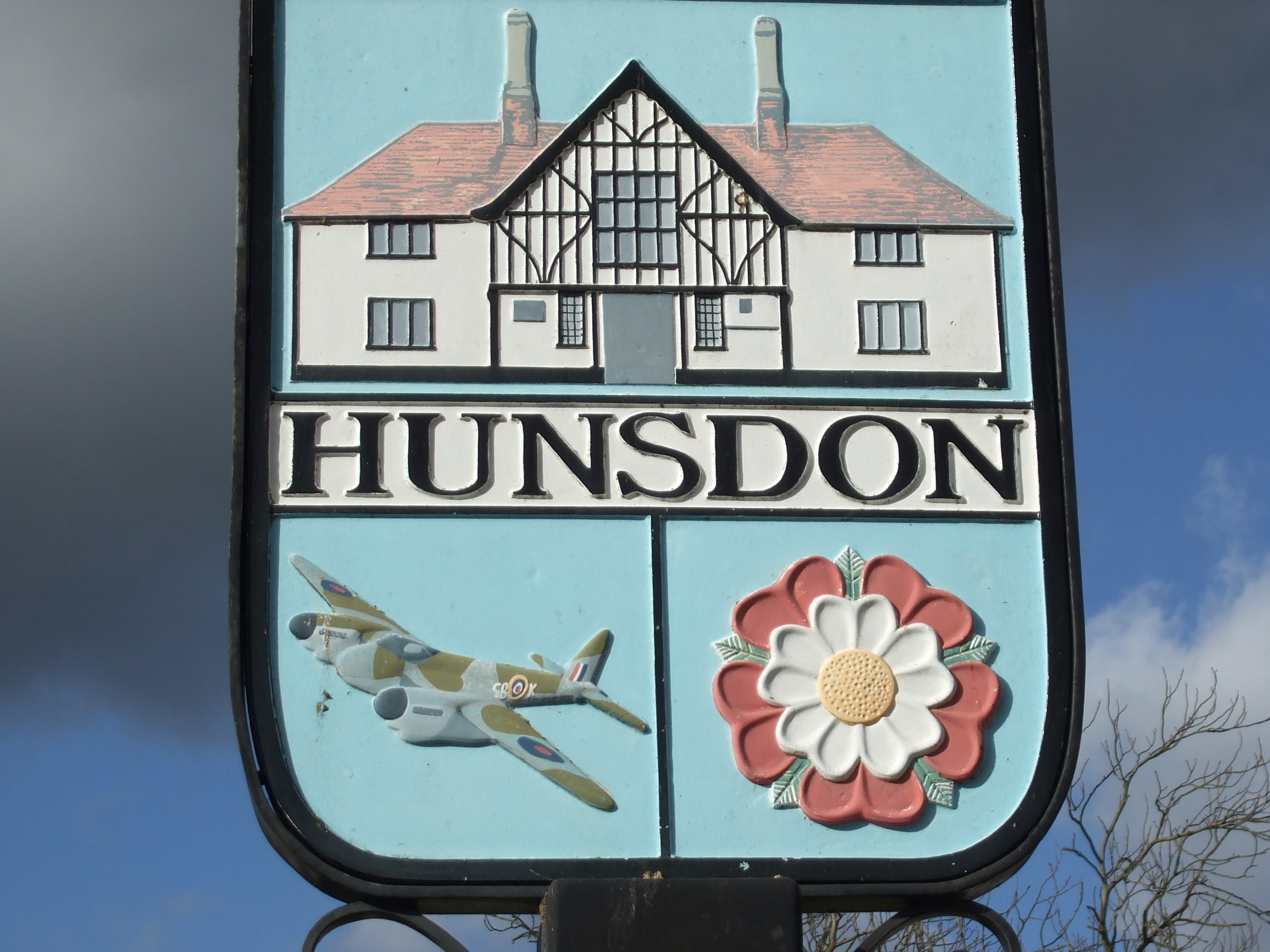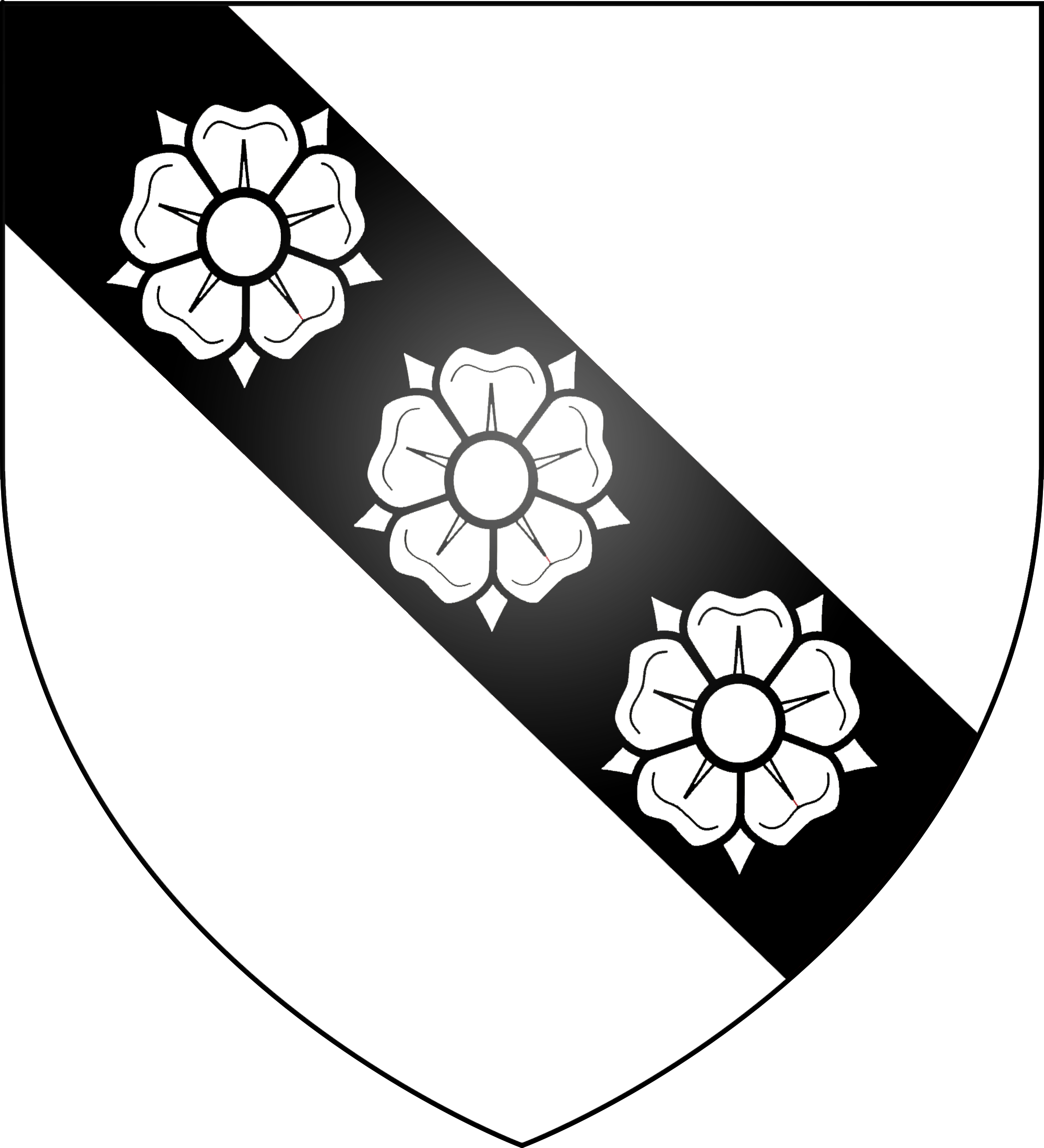|
Hunsdon House
Hunsdon House is a historic house in Hunsdon, Hertfordshire, England, northwest of Harlow. Originally constructed in the 15th century, it was most notably the estate of Henry VIII of England. It has been rebuilt several times since then, and is no longer as grand as it was in the Tudor era. It is a Grade I listed building. Early history It was originally constructed of brick in 1447 by Sir William Oldhall in the shape of a tower, but as Oldhall supported the House of York during the Wars of the Roses, he was stripped of the property by the Lancastrian Henry VI. Upon the Yorkist Edward IV's accession to the throne in 1471, the land was returned to the Oldhall family. John Oldhall then died in the Battle of Bosworth and with the Lancastrians back in power, the estate was taken over by Henry VII. Henry traded it to his mother Margaret Beaufort for Old Soar Manor in Kent in 1503. After the death of Margaret in 1509, her grandson Henry VIII gave it to Thomas Howard, 2nd Duke ... [...More Info...] [...Related Items...] OR: [Wikipedia] [Google] [Baidu] |
Hunsdon House - Geograph 1445429
Hunsdon is a village and civil parish in Hertfordshire, England. It is around east of Ware, Hertfordshire, Ware and north-west of Harlow. The population of the village taken at the 2011 Census was 1,080. See also *Baron Hunsdon *Hunsdon Airfield *The Hundred Parishes References External linksHunsdon Village Hall {{authority control Villages in Hertfordshire Civil parishes in Hertfordshire East Hertfordshire District ... [...More Info...] [...Related Items...] OR: [Wikipedia] [Google] [Baidu] |
Old Soar Manor
Old Soar Manor is an English Heritage property, owned and maintained by the National Trust. Located near Plaxtol, Kent, England, it is a small 13th century stone manor house. It is listed Grade I on the National Heritage List for England. Built in 1290, the manor originally belonged to the Culpepper family. The centre of the house was originally the great hall but this no longer exists, as it was demolished in 1780 and replaced with the red-brick farmhouse on the site. The farmhouse is Grade II listed. Visitors today can see the solar, latrine A latrine is a toilet or an even simpler facility that is used as a toilet within a sanitation system. For example, it can be a communal trench in the earth in a camp to be used as emergency sanitation, a hole in the ground ( pit latrine), or ... and chapel which remain. References External links *photos of Old Soar Manor and surrounding area on geograph.org.uk* Buildings and structures completed in 1290 English Heritag ... [...More Info...] [...Related Items...] OR: [Wikipedia] [Google] [Baidu] |
Elizabethan Architecture
Elizabethan architecture refers to buildings of a certain style constructed during the reign of Queen Elizabeth I of England and Ireland from 1558–1603. Historically, the era sits between the long era of the dominant architectural style of religious buildings by the Catholic Church, which ended abruptly at the Dissolution of the Monasteries from c.1536, and the advent of a court culture of pan-European artistic ambition under James I (1603–25). Stylistically, Elizabethan architecture is notably pluralistic. It came at the end of insular traditions in design and construction called the Perpendicular style in the church building, the fenestration, vaulting techniques, and open truss designs of which often affected the detail of larger domestic buildings. However, English design had become open to the influence of early printed architectural texts (namely Vitruvius and Alberti) imported to England by members of the church as early as the 1480s. Into the 16th century, illus ... [...More Info...] [...Related Items...] OR: [Wikipedia] [Google] [Baidu] |
Neale(1818) P2
Neale may refer to: * Neale (surname) * Neale, County Mayo * Neale (electric car) See also * Neil Neil is a masculine name of Gaelic and Irish origin. The name is an anglicisation of the Irish ''Niall'' which is of disputed derivation. The Irish name may be derived from words meaning "cloud", "passionate", "victory", "honour" or "champion".. A ..., containing Neale as a given name {{disambig ... [...More Info...] [...Related Items...] OR: [Wikipedia] [Google] [Baidu] |
Baron Hunsdon
Baron Hunsdon is a title that has been created three times. It was first created in 1559 in the Peerage of England for the soldier and courtier Henry Carey. His grandson, the fourth Baron, was created by Viscount Rochford in 1621 and Earl of Dover, in the County of Kent, in 1628. These titles were also in the Peerage of England. He was succeeded by his son, the second Earl. He had already in 1640 been summoned to the House of Lords through a writ of acceleration in his father's barony of Hunsdon. However, on his death in 1677, the viscountcy and earldom became extinct. The barony passed to his second cousin once removed, the sixth Baron. He was the great-grandson of Sir Edmund Carey, the younger son of the first Baron. On his death, the title passed to his first cousin, the seventh Baron. He died unmarried and was succeeded by his first cousin once removed, the eighth Baron. On the latter's death in 1765, the barony became extinct as well. The second creation was in 1832 in t ... [...More Info...] [...Related Items...] OR: [Wikipedia] [Google] [Baidu] |
Henry Carey, 1st Baron Hunsdon
Henry Carey, 1st Baron Hunsdon Knight of the Garter, KG Privy Council of England, PC (4 March 1526 – 23 July 1596), was an English nobleman and courtier. He was the patron of the Lord Chamberlain's Men, William Shakespeare's playing company. The son of Mary Boleyn, he was a cousin of Elizabeth I of England, Elizabeth I. Early life Henry Carey was the second child of William Carey (courtier), William Carey and Mary Boleyn who was the sister of Anne Boleyn, the second wife and Queen of Henry VIII of England, Henry VIII. Carey and his elder sister Catherine Carey, Lady Knollys, Catherine came under the wardship of their maternal aunt Anne Boleyn, who was engaged to Henry VIII at the time. The children still had active contact with their mother, who remained on good terms with her sister, until Mary's secret elopement with a soldier, William Stafford (1500-1565), William Stafford (later Lord of Chebsey) in 1535. Anne Boleyn acted as her nephew's patron and provided him with an ... [...More Info...] [...Related Items...] OR: [Wikipedia] [Google] [Baidu] |
Elizabeth I Of England
Elizabeth I (7 September 153324 March 1603) was List of English monarchs, Queen of England and List of Irish monarchs, Ireland from 17 November 1558 until her death in 1603. Elizabeth was the last of the five House of Tudor monarchs and is sometimes referred to as the "Virgin Queen". Elizabeth was the daughter of Henry VIII and Anne Boleyn, his second wife, who was executed when Elizabeth was two years old. Anne's marriage to Henry was annulled, and Elizabeth was for a time declared Royal bastard, illegitimate. Her half-brother Edward VI ruled until his death in 1553, bequeathing the crown to Lady Jane Grey and ignoring the claims of his two half-sisters, the Catholic Church, Catholic Mary I of England, Mary and the younger Elizabeth, in spite of Third Succession Act, statute law to the contrary. Edward's will was set aside and Mary became queen, deposing Lady Jane Grey. During Mary's reign, Elizabeth was imprisoned for nearly a year on suspicion of supporting Protestant reb ... [...More Info...] [...Related Items...] OR: [Wikipedia] [Google] [Baidu] |
Edward VI Of England
Edward VI (12 October 1537 – 6 July 1553) was King of England and Ireland from 28 January 1547 until his death in 1553. He was crowned on 20 February 1547 at the age of nine. Edward was the son of Henry VIII and Jane Seymour and the first English monarch to be raised as a Protestant. During his reign, the realm was governed by a regency council because he never reached maturity. The council was first led by his uncle Edward Seymour, 1st Duke of Somerset (1547–1549), and then by John Dudley, 1st Earl of Warwick (1550–1553), who from 1551 was Duke of Northumberland. Edward's reign was marked by economic problems and social unrest that in 1549 erupted into riot and rebellion. An expensive war with Scotland, at first successful, ended with military withdrawal from Scotland and Boulogne-sur-Mer in exchange for peace. The transformation of the Church of England into a recognisably Protestant body also occurred under Edward, who took great interest in religious matters. His fath ... [...More Info...] [...Related Items...] OR: [Wikipedia] [Google] [Baidu] |
Mary I Of England
Mary I (18 February 1516 – 17 November 1558), also known as Mary Tudor, and as "Bloody Mary" by her Protestant opponents, was Queen of England and Ireland from July 1553 and Queen of Spain from January 1556 until her death in 1558. She is best known for her vigorous attempt to reverse the English Reformation, which had begun during the reign of her father, Henry VIII. Her attempt to restore to the Church the property confiscated in the previous two reigns was largely thwarted by Parliament, but during her five-year reign, Mary had over 280 religious dissenters burned at the stake in the Marian persecutions. Mary was the only child of Henry VIII by his first wife, Catherine of Aragon, to survive to adulthood. Her younger half-brother, Edward VI, succeeded their father in 1547 at the age of nine. When Edward became terminally ill in 1553, he attempted to remove Mary from the line of succession because he supposed, correctly, that she would reverse the Protestant refor ... [...More Info...] [...Related Items...] OR: [Wikipedia] [Google] [Baidu] |
Moat
A moat is a deep, broad ditch, either dry or filled with water, that is dug and surrounds a castle, fortification, building or town, historically to provide it with a preliminary line of defence. In some places moats evolved into more extensive water defences, including natural or artificial lakes, dams and sluices. In older fortifications, such as hillforts, they are usually referred to simply as ditches, although the function is similar. In later periods, moats or water defences may be largely ornamental. They could also act as a sewer. Historical use Ancient Some of the earliest evidence of moats has been uncovered around ancient Egyptian castles. One example is at Buhen, a castle excavated in Nubia. Other evidence of ancient moats is found in the ruins of Babylon, and in reliefs from ancient Egypt, Assyria, and other cultures in the region. Evidence of early moats around settlements has been discovered in many archaeological sites throughout Southeast Asia, including ... [...More Info...] [...Related Items...] OR: [Wikipedia] [Google] [Baidu] |
Tudor Architecture
The Tudor architectural style is the final development of Medieval architecture in England and Wales, during the Tudor period (1485–1603) and even beyond, and also the tentative introduction of Renaissance architecture to Britain. It followed the Late Gothic Perpendicular style and, gradually, it evolved into an aesthetic more consistent with trends already in motion on the continent, evidenced by other nations already having the Northern Renaissance underway Italy, and especially France already well into its revolution in art, architecture, and thought. A subtype of Tudor architecture is Elizabethan architecture, from about 1560 to 1600, which has continuity with the subsequent Jacobean architecture in the early Stuart period. In the much more slow-moving styles of vernacular architecture, "Tudor" has become a designation for half-timbered buildings, although there are cruck and frame houses with half timbering that considerably predate 1485 and others well after 1603; ... [...More Info...] [...Related Items...] OR: [Wikipedia] [Google] [Baidu] |
Edward VI Of England C
Edward is an English given name. It is derived from the Anglo-Saxon name ''Ēadweard'', composed of the elements '' ēad'' "wealth, fortune; prosperous" and '' weard'' "guardian, protector”. History The name Edward was very popular in Anglo-Saxon England, but the rule of the Norman and Plantagenet dynasties had effectively ended its use amongst the upper classes. The popularity of the name was revived when Henry III named his firstborn son, the future Edward I, as part of his efforts to promote a cult around Edward the Confessor, for whom Henry had a deep admiration. Variant forms The name has been adopted in the Iberian peninsula since the 15th century, due to Edward, King of Portugal, whose mother was English. The Spanish/Portuguese forms of the name are Eduardo and Duarte. Other variant forms include French Édouard, Italian Edoardo and Odoardo, German, Dutch, Czech and Romanian Eduard and Scandinavian Edvard. Short forms include Ed, Eddy, Eddie, Ted, Teddy and Ned ... [...More Info...] [...Related Items...] OR: [Wikipedia] [Google] [Baidu] |


_cropped_2.jpg)






